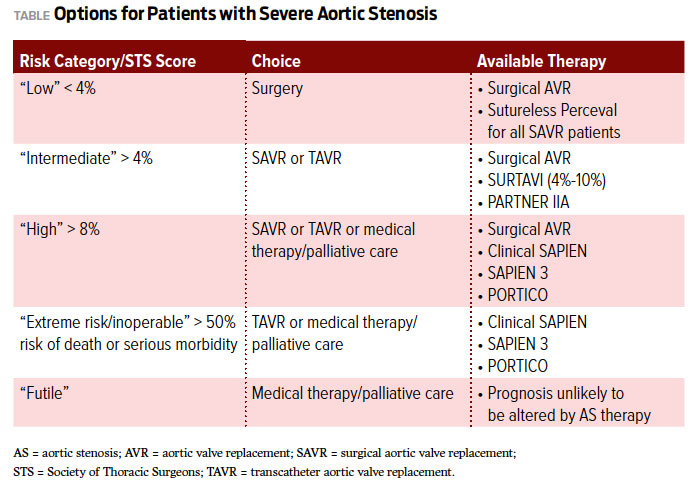Shared Decision-Making: Centering Care on the Patient; But are we asking too much of the patient?
ACCEL | Guidelines are emphasizing shared decision-making as a means to promote patient preferences in clinical decisions. This includes the 2014 American College of Cardiology (ACC)/American Heart Association (AHA) guidelines on issues ranging from valvular heart disease to atrial fibrillation (AF), and cholesterol management. The concept is even part of the Patient Protection and Affordable Care Act.
|
The emphasis on patient centeredness represents a critically important and appropriate shift in recommendations, emphasizing the doctor-patient relationship and individualized, preference-based therapy.
One key to shared decision-making goes back to the question: What is informed consent? The ECRI Institute (formerly the Emergency Care Research Institute) notes that it is more than signing a piece of paper. "The underlying basis for the doctrine of informed consent is the patient's right to self-determination—the patient's right to make an informed choice on whether to choose or decline a medical procedure," according to ECRI Institute patient safety analyst Gail Horvath, MSN, RN: "Simply signing a consent form for legal requirements does not reflect that the patient understands the goals of care, what these goals are, and if they align with [the patient's] interests."
Studies have found that when patients are asked to sign a consent form, most patients do not read the document they are signing, and of those who do read it, most do not understand it thoroughly.
A Public Imperative
Megan Coylewright, MD, MPH, and her colleagues at the Mayo Clinic, Rochester, Minnesota have contributed a lot to this field.1-4 They have called patient-centered shared decision-making "a public imperative."1 Shared decision making strives to involve both patients and clinicians in clinical decision-making using the best available evidence regarding treatment options to derive personalized estimates of risks and benefits for each choice.
Dr. Coylewright emphasizes that shared decision-making is not just patient education but instead an interaction, a back-and-forth between patient and clinician composed of three fundamental steps:
- Information sharing, with the clinician translating the likely benefits and risks of each option and the patient sharing his or her values and preferences;
- Deliberation, when the patient and clinician consider the relative advantages and disadvantages of the available options (including no additional treatment) in light of these values; and finally,
- Consensus, when a treatment decision is made that both the patient and clinician are willing and able to implement.
The reality is that this is the exception and not the rule. More than 70% of the time, evidence suggests, clinicians do not
- portray that there are multiple options,
- list the options,
- explain the pros and cons, or
- explore patient expectations.
Decision aids are one type of tool that can be used during the clinical encounter to engage patients in shared decision-making. In a recent paper, Dr. Coylewright noted a variety of such tools are in use, including ones covering acute chest pain, arrhythmias, cardiopulmonary resuscitation, heart failure, coronary heart disease, hyperlipidemia, hypertension, peripheral artery disease, stroke, and valvular heart disease.
Most recently, she and her colleagues have conducted a meta-analysis of 771 unique clinician-patient encounters across seven randomized trials. Decision aids improved knowledge, reduced decisional conflict, and increased patient involvement in shared decision-making. Importantly, there was no significant difference by age, gender, education, income, or insurance status.
Are We Asking too Much of Patients?
There has been some pushback, with one commentary asking "Are we expecting too much" of patients to share clinical decision-making?5 In terms of research, Steven J. Katz, MD, MPH, and Sarah Hawley, PhD, argue that it's difficult to separate patient versus clinician effects.
Also, despite some well-documented benefits, they wrote, "The literature does not support (shared decision-making's) potential to reduce over-treatment and costs." There are also important issues relating to the complexity and variability of patient preferences as well as the question, "Which decisions are truly preference sensitive?"
A good example of where there is room for patient input may very well be shared decision-making related to severe aortic stenosis (AS). The guidelines offer options based on patient risk (TABLE).

In a decision aid for patients with severe AS, patients are offered information to help them with important questions, such as:
- What are my choices?
- Will I feel better?
- Will it help me live longer?
- What are the risks?
Whether clinicians are able to fit risk prediction, risk communication, and participatory deliberation into a busy clinic visit remains to be seen. However, there are specific settings, such as severe AS, where it will remain important to get patients involved with the best course of action. Also, in a broader sense, the public may come to expect more shared decision-making as patient advocates and the popular press continue to encourage patients to play an active role in their health care.
References
- Coylewright M, Montori V, Ting HH. Am J Med. 2012 Jun;125:545-7.
- Hess EP, Coylewright M, Frosch DL, Shah ND. Circ Cardiovasc Qual Outcomes. 2014;7:797-803.
- Coylewright M, Shepel K, Leblanc A, et al. PLoS One. 2012;7:e49827.
- Seaburg L, Hess EP, Coylewright M, Ting HH, et al. Circulation. 2014;129:704-10.
- Katz SJ, Hawley S. JAMA. 2013;310:1559-60.
(Editor's note: The Mayo decision aids are available at shareddecisions.mayoclinic.org/)
Keywords: CardioSource WorldNews, ACC Publications
< Back to Listings
